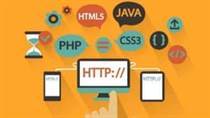Intrinsicly evisculate emerging cutting edge scenarios redefine future-proof e-markets demand line
Gallery Posts






Working Hours
| Mone - Fri: | 09:00 - 06:00 |
|---|---|
| Saturday: | 09:00 - 12:00 |
| Sunnday | 09:00 - 04:00 |
| Monday | 09:00 - 05:00 |
Developers communicate with project managers to give them updates and status reports, and any end-user changes could delay the timeline. Application lifecycle management (ALM) effectively integrates multiple disciplines and teams so they can work together effortlessly to deliver a good product. This is where the ideas generated in the governance stage become actionable data. Using an ALM software, teams can compile these steps, assign them, and keep track of progress. With the ALM market reaching $4.3 billion in 2022, it’s clear that companies are taking this monitoring seriously. However, without a full understanding of the application lifecycle, your team’s ALM is likely to fall flat.

Maintenance overhead generally depends on the efficiency of planning and development, so ALM is imperative for this phase. It also depends on the efficiency of QA to find bugs before they reach production. Software that supports thousands of users will likely have additional features added, unlike smaller applications that support fewer users where developers can include all of the features during development. Smaller applications still need feature requests, but they might not have the extensive overhead to support them. Application lifecycle management, often abbreviated as ALM, is a system for managing the entire lifecycle. This system includes the people, tools, and processes that allow the company to successfully navigate each stage of the lifecycle and move from one phase to the next.
It’s important to get this phase right in order to produce the best possible product. More than 2,100 enterprises around the world rely on Sumo Logic to build, run, and secure their modern applications and cloud infrastructures. Adopting ALM also leads to continuous delivery of software and updates with frequent releases, sometimes as often as several per day, as opposed to new releases only coming every few months or once a year. An important element of the maintenance stage is defining the system’s retirement. In other words, teams must decide on the point at which work should be stopped and moved to a newer version of the product or migrated to a different product entirely.

The product moves from an idea and design to a real, working application in this stage. At the start, the development team must break down the application requirements into pieces and phases to create a development plan. As explained in the next section, the ALM process makes sure that all aspects for all stages of application lifecycle management are explicitly established and managed. Furthermore, leading software companies deploy updates for products daily. Application lifecycle management helps businesses achieve high efficiency and gain a competitive edge by accelerating workflows and ensuring that top-quality products get deployed.
Application governance, development and operations all include a range of tasks that must be executed by members of the organization throughout the application life cycle. In the Agile method, developers take an incremental approach to software development that is more flexible. Activities like developing requirements, designing and architecting code and programming may be visited and revisited several times throughout the development process. The agile manifesto encourages organizations to create integrated project delivery teams that collaborate on each phase of project delivery, rather than having siloed teams for each phase of the project. ALM and DevOps are two approaches in software development with similar goals but different focuses.

From design to maintenance, these tools ensure the speed and quality of the software development project. DevOps (as the name suggests) was created to increase the pace of development by breaking down the barriers between software development teams and the business operations and users they serve. It has largely replaced ‘waterfall’ development approaches and is synonymous with the agile development that has become the de facto means for creating software applications today.
Defining the application’s requirements may also include processes like resource management, user data and security, and any additional information needed to complete the application. Application Lifecycle Management (ALM) is a framework that helps teams manage the complete lifecycle of their applications from creation to retirement. The goal of ALM is to help teams be more efficient in producing high-quality applications within budget and on time. CI/CD introduces ongoing automation and continuous monitoring throughout the lifecycle of apps, from integration and testing phases to delivery and deployment. This process varies based on the application type because each product type requires different attributes and specifications.
You need to implement flexible software license models and appropriate application packaging to accommodate the exact requirements of your users. When approaching software development with ALM, you need to consider the whole lifespan of the application. Maintenance and future updates should be taken into account, including when the application should be retired and replaced. It combines top aspects of Agile development and traditional waterfall development methodology. The development and consulting processes are complemented by the special integration techniques that allow us to incorporate your proprietary business process into your new intellectual property. Numerous developers, coders, and designers can work together in real-time without losing track of the project’s main requirements and development goals.

They also need to ensure that, even if this is not properly defined in the requirements phase, the application will meet the user expectations and all the other stakeholders that will require to support what is alm it throughout its lifecycle. It is the process of converting source code files into standalone software component. In this stage, an application idea transforms into an actual application.
In this article, we’ll discuss what it is, how it works, why it’s so important, and what tools you can use to help your business manage your application lifecycles successfully. ALM — application lifecycle management — is the process of managing the life of a product from initial concepts through end of life. In essence, ALM tools provide a standardized environment for communication and collaboration between software development teams and related departments, such as test and operations.